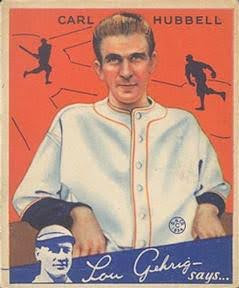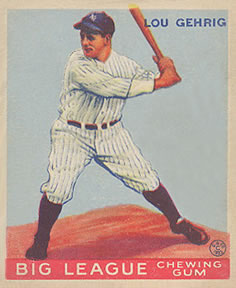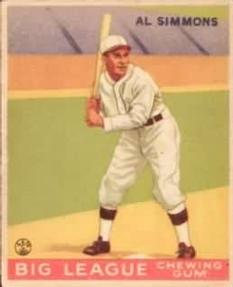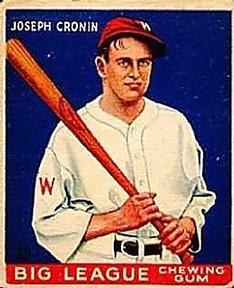Collections That Tell a Story
- Jason
- May 7, 2024
- 5 min read
Updated: May 12, 2024
If I show you a 1934 Goudey Carl Hubbell, then you’ll see a fantastic baseball card, and naturally, there’s nothing wrong with that. On the contrary, how often do many of us scroll through our Hobby Twitter feeds for the sole purpose of seeing fantastic baseball cards? Certainly, the SPOART, Cards with a Story, Mark Hoyle, Pre-War Card Collector, and Cigar Box Cards accounts present no shortage of cardboard eye candy!
On the other hand, if I show you these six cards, you are seeing more than just six cards. You’re seeing a story: Carl Hubbell’s most famous feat.
Though the above story is not one many collectors can afford to tell–at least not with vintage 1930s cardboard–the baseball card universe is vast enough to support “card stories” at just about any price point: 1951 Bowman cards of Bobby Thomson and Ralph Branca; 1964 Topps cards of Lou Brock and Ernie Broglio; or 1974 Topps cards of Hank Aaron, Al Downing, and even Tom House if you like!
Stories like the ones above are up to the collector to create, but sometimes the card makers do it for us. One example is the 1959 Fleer Ted Williams set, whose 80 cards more or less cover the Splinter’s entire life from boyhood through the start of the upcoming season. The set even addresses Ted as a war hero, fisherman, and father! Another set that hands us a story is 1962 Topps with its “Babe Ruth Special” subset. Its ten cards, numbered 135-144, take us all the way from the St. Mary’s Industrial School for Boys to the Bambino’s farewell address. More recently, Topps did the same for Jackie Robinson in 2015.
For the most part, our ability to tell a story with a binder page, shelf display, or shoebox is only limited by our budget and our imagination. Sometimes, however, we are limited by whether or not the cards we need even exist! As an example, the 1934 Goudey set has Hubbell, Gehrig, and Foxx, but it does not have Ruth, Simmons, and Cronin. For that reason, I subbed in 1933 Goudey cards for all five of the American League sluggers. For another example, I’ll share with you the status of a “story” I’m building at this very moment, that is if you’re okay with a little football.
*
The focus of this story is NFL pioneer Kenny Washington, the first Black player to sign with an NFL team following the league’s unwritten rules of “whites only.” While you might expect Panini or Topps had already told Washington’s story in cardboard, the truth is that neither company has ever honored him with even a single card! Still, I’m a stubborn enough collector to at least try my best. Therefore, in the spirit of the Fleer Ted Williams set, here is my earnest attempt to share the story of Kenny Washington through cardboard.
KENNY AS A YOUNG BOY
For the moment I have nothing to show here, but I have at least some hope that a card may someday appear of Kenny’s father, Edgar “Blue” Washington. Certainly a baseball card is possible as Blue spent some time with the Chicago American Giants and Kansas City Monarchs, but we may even see a non-sport card as well since Blue appeared in nearly 100 films, including “Gone with the Wind” and “King Kong.”
HIGH SCHOOL YEARS
Both of my offerings here are a stretch, but here they are.
The 1948 Bowman card features Kenny’s Lincoln High School classmate, actor (and future “Music Man”) Robert Preston. As for the 1991 NFL Pro Set card, legendary official Jim Tunney is the son of Kenny’s high school football coach, Jim Tunney, Sr.
COLLEGE FOOTBALL CAREER
Kenny starred at UCLA from 1937 to 1939 and is likely the greatest football player in the program’s 100+ year history. While there are no cards of Kenny as a Bruin (apart from custom creations), there are thousands of cards of his most famous teammate.
While most show him with a different team playing a different sport, Jackie’s 1983-84 Cramer Pac-10 Football Legends card is the first to show him on the gridiron.
Kenny’s best friend on the team, Woody Strode, also had some cardboard though not much. In fact, the total population of Woody Strode football cards is currently 72. I’ll start with the Strode card there are two of, this 2009 Upper Deck SP “Legendary Cuts” card.
Finally, a card of UCLA head coach Babe Horrell is largely out of the question as the only card in existence is a 1/1. However, one of the Bruins assistants, Ray Richards, line coach, made it onto cardboard twice.
His first card (if we are okay stretching the definition a bit) is a 1935 Diamond Matchbook, and his second is from a 1989 set celebrating 100 years of Nebraska Cornhusker football.
PACIFIC COAST PROFESSIONAL FOOTBALL LEAGUE
After UCLA Kenny played in an integrated West Coast league known as the PCPFL. At the moment no cards exist to memorialize the league and its players. Of course I’ll be the first in line if we ever see cards of Kenny as a Hollywood Bear!
NATIONAL FOOTBALL LEAGUE
Kenny’s historic signing with the Rams might not have been possible if not for the efforts and advocacy of journalist Halley Harding. “Plan A” was absolutely for the Cleveland Rams to move to Los Angeles in 1946, play their games in the 103,000 seat Los Angeles Coliseum, and remain all-white. However, Harding was emphatic that segregation had no place in a taxpayer-funded facility. The Rams reluctantly agreed and made history in the process.
Normally, a card of a journalist few have heard of would be a tough ask. However, Harding had previously played baseball in the Negro Leagues and by some quirk of fate made the cut in the 2020 Dreams Fulfilled Negro Leagues Legends set. (Thank you, Graig Kreindler!)
Following Kenny onto the Rams was his UCLA teammate Woody Strode, whose only football card apart from the cut signature card shown earlier is this 2018 Jogo Canadian Football League Alumni card, of which only 70 were printed. (In fairness, I should also point out a team card that some collectors might count.)
Finally, we have cards of Kenny himself, thanks to the 1948 Bowman, 1948 Leaf, and (nearly identical) 1949 Leaf sets.
Naturally, each of these same sets includes a small number of Kenny’s Rams teammates as well.
LIFE AFTER FOOTBALL
While you might expect Kenny’s toughest cards to be his playing era football ones, this is very much not the case. By far his toughest card comes from his foray into baseball in 1950. (Kenny was an absolute stud on the diamond, batting 300 points higher than Jackie Robinson while at UCLA!)
After spending Spring Training of 1950 with the New York Giants, Kenny landed with the Los Angeles Angels of the Pacific Coast League. Injuries kept his baseball career brief but he nonetheless managed a baseball card in the extremely tough 1950 Hage’s Dairy issue.
*********
If you’ve made it this far with me, you might be thinking, “But that card story sucks! It barely even has any Kenny Washington cards!” Truth is, I can’t fully disagree. In a perfect world, Kenny’s story would be as well known to football fans as Jackie’s is to baseball fans and he would have all kinds of awesome cardboard.
Personally, I believe there is a huge opportunity for Panini to give us the “Kenny Washington Story” as a special subset or insert set, much in the same way Topps gave us Jackie Robinson in 2015. If any of my readers have any connections or pull (I see you, @EDizzle116!) with Panini top brass, do me a solid and spread the word.
As for the rest of you, what are some of the stories your collections tell, and what story does your collection tell about you?
Have fun, and happy collecting!



























コメント